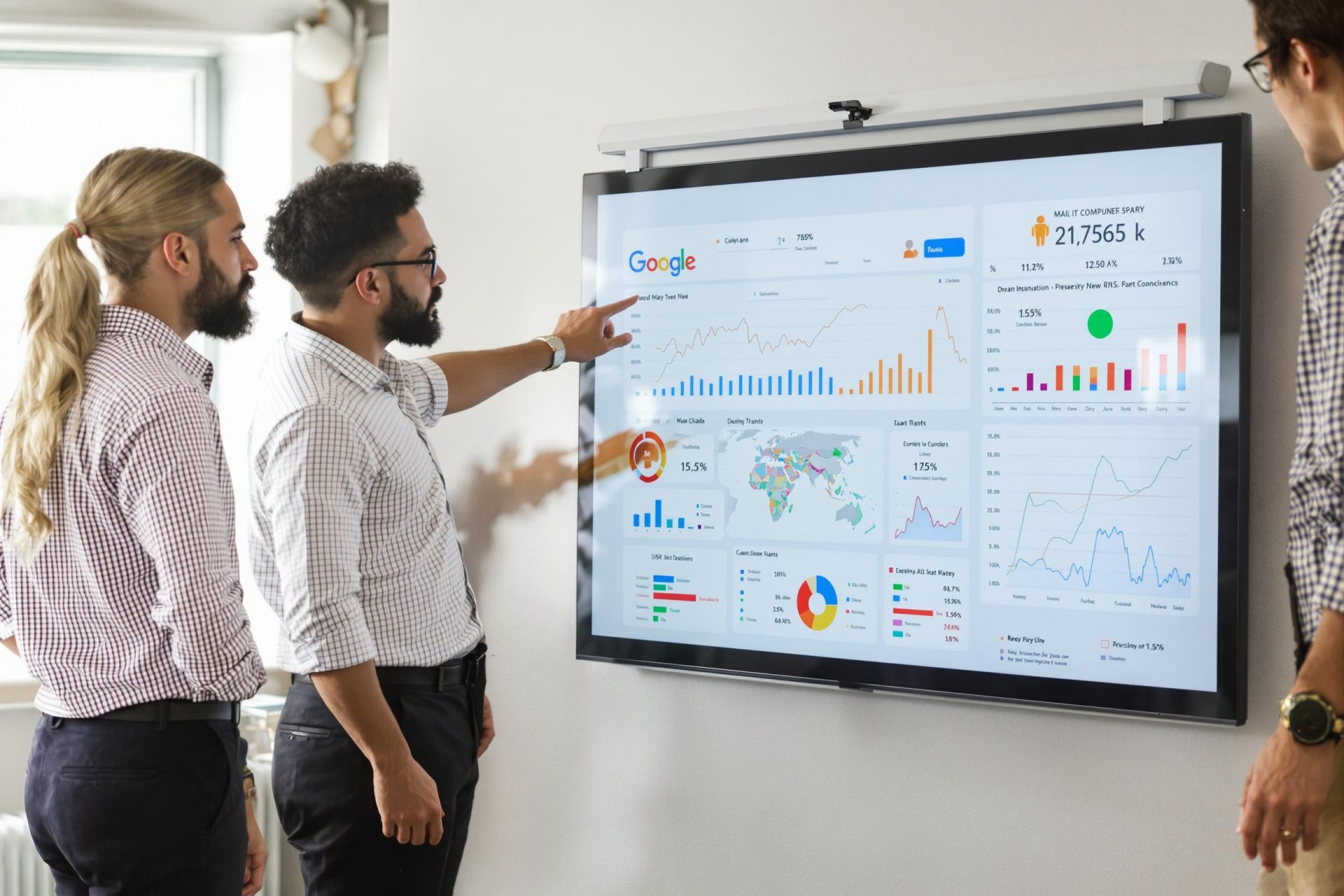Making sense of complex data has never been easier for analysts and decision-makers. With data visualization tools that leverage intelligent features, anyone can transform dense information into compelling visuals that reveal actionable insights.
⚙️ What they do: These tools transform raw data into interactive charts, dashboards, and visual reports while automating pattern detection and insight generation.
📊 Why use them: They dramatically reduce the time and technical expertise needed to create professional visualizations, allowing users to focus on interpreting insights rather than building charts.
1. Tableau – Enterprise Analytics Platform
What is it? Tableau has evolved from a traditional visualization platform into an analytics powerhouse with Tableau Next and Tableau Agent features that leverage conversational interfaces to accelerate data workflows from preparation to insight generation.
Features:
- 🔍 Natural language interface that allows professionals to create complex visualizations and generate comprehensive reports without manual configuration
- 🤖 Automated pattern and anomaly detection that identifies trends that might otherwise go unnoticed
- 📊 Robust visualization engine optimized for analysts, data leaders, and business professionals working with complex datasets
Official site: Tableau
2. Microsoft Power BI – Integrated Business Intelligence
What is it? Microsoft Power BI integrates advanced capabilities throughout its data visualization workflow, enabling professionals to transform complex datasets into interactive dashboards efficiently. Its features automatically find patterns in data, suggest visualization types, and generate complete reports through natural language prompts.
Features:
- 💬 Q&A feature that allows users to ask questions about their data in everyday language and receive visual responses
- 📈 Automated forecasting, anomaly detection, and smart narratives that explain the significance of data trends
- 🔐 Enterprise governance features that ensure consistent data quality while enabling self-service analytics
Official site: Microsoft Power BI
3. ThoughtSpot – Natural Language Analytics
What is it? ThoughtSpot offers an analytics experience centered around natural language search and automated insight generation. Its Spotter AI Analyst functions as a virtual data assistant, answering complex questions and providing contextual insights without requiring users to build visualizations manually.
Features:
- 🧠 AI-Augmented Dashboards that not just present data but actively highlight relevant patterns and suggest follow-up questions
- 🔍 Proactive trend and outlier detection that surfaces important insights before users know to look for them
- 📱 Embedded intelligent visualizations that integrate directly into business workflows to make data-driven decisions more accessible
Official site: ThoughtSpot
4. Qlik – Associative Data Engine
What is it? Qlik combines robust data visualization with analytics through its Insight Advisor, which generates automated insights and enables natural language interaction. The platform allows users to search conversationally through their data and receive relevant visualizations instantly.
Features:
- 🔮 AutoML capability that enables business users to create and deploy machine learning models without specialized data science expertise
- 🔄 Associative engine that reveals connections in data that might be missed in traditional query-based tools
- 📊 Integrated predictive analytics that brings forward-looking analysis alongside historical data visualizations
Official site: Qlik
5. Google Looker – Cloud-Based Analytics
What is it? Google Looker combines professional-grade business intelligence with Gemini AI integration to accelerate analytical workflows. The AI assistant helps users quickly create and configure visualizations, generate formulas, and build comprehensive reports through natural language interaction.
Features:
- 📝 Semantic modeling layer that ensures consistent data governance while allowing flexible self-service analytics
- ☁️ Integration with Google’s broader cloud ecosystem, particularly Vertex AI for advanced custom workflows
- 🔌 Embedded analytics capabilities that allow deployment of visualizations directly into operational applications
Official site: Google Looker
6. Sisense – Embedded Analytics Platform
What is it? Sisense provides an analytics platform that focuses on embedding interactive visualizations directly into applications and workflows. Its generative capabilities guide users through the entire analytics process, from data preparation to insight discovery and visualization creation.
Features:
- 🔄 Complex data handling from multiple sources transformed into accessible visual formats without technical expertise
- 💡 Automatic visualization suggestion based on specific data types and use cases
- 🧩 Embedded analytics framework that makes it straightforward to incorporate visualizations into customer-facing applications
Official site: Sisense
7. Julius AI – Conversational Data Analyst
What is it? Julius AI functions as a data analyst that allows professionals to interact with their data through natural language conversations. Users can upload data files and begin asking questions, with the system generating appropriate visualizations, performing analyses, and creating reports automatically.
Features:
- 🧹 Data cleaning and transformation capabilities for messy datasets
- 📊 Automatic correlation and trend identification with suggested visualization formats
- 💬 Conversational interface combining Excel and Python-like capabilities without requiring programming skills
Official site: Julius AI
8. Zoho Analytics – Self-Service BI
What is it? Zoho Analytics offers a comprehensive self-service BI platform with multiple capabilities. The integrated “Ask Zia” assistant allows users to generate reports and visualizations through natural language queries, removing technical barriers to accessing data insights.
Features:
- 🎨 50+ visualization options within an intuitive drag-and-drop interface
- 📝 Zia Insights that generate narrative explanations of data trends
- 📈 Automated forecasting and anomaly detection that add forward-looking context to historical data patterns
Official site: Zoho Analytics
9. Datapad – Mobile-First Data Assistant
What is it? Datapad functions as a data assistant that helps professionals create visualizations and dashboards through simple prompts. The platform automates routine analysis tasks and transforms complex datasets into accessible visual formats without requiring specialized technical skills.
Features:
- 💬 Natural language data querying with instant answers and appropriate visualizations
- 📱 Mobile-first approach ensuring decision-makers can access visualizations anywhere
- ⚠️ Automated KPI tracking and alert systems for significant data changes
Official site: Datapad
10. IBM Cognos Analytics – Enterprise BI Solution
What is it? IBM Cognos Analytics combines traditional business intelligence capabilities with features that enhance the entire data visualization workflow. Its AI Assistant allows users to ask questions in natural language and automatically generates appropriate visualizations and dashboards in response.
Features:
- 🔍 Guided data exploration suggesting relevant visualizations and highlighting patterns
- 🔗 Automatic identification of relationships between data elements with visualization recommendations
- 🧹 Extended data preparation capabilities for enterprise users, helping clean and structure information
Official site: IBM Cognos Analytics
11. MicroStrategy (Strategy) – Enterprise AI+BI Platform
What is it? MicroStrategy, now rebranded as Strategy, delivers an enterprise AI+BI platform that integrates advanced visualization capabilities. The platform’s natural language interface allows users to request and modify visualizations through conversational queries, removing technical barriers to data exploration.
Features:
- 🔍 Automated insight detection and proactive alerting for significant data changes
- 💡 HyperIntelligence feature bringing visualizations directly into everyday applications
- 🧹 Data preparation tools ensuring visualizations are built on clean, reliable information
Official site: MicroStrategy
12. Plotly – Interactive Visualization Framework
What is it? Plotly has evolved from a charting library to a comprehensive platform for interactive visualizations. Plotly AI assists in developing data applications and dashboards, accelerating the process of transforming complex datasets into interactive visual experiences.
Features:
- 🔄 Open architecture allowing seamless integration with data science workflows including Python and R
- 📊 Intelligent chart type suggestions and data transformation recommendations
- ⚙️ Assisted development environment that reduces time required to create professional-grade visualizations
Official site: Plotly
13. Alteryx – Data Preparation & Analysis
What is it? Alteryx provides a data analytics platform that streamlines the process of preparing and visualizing complex information. While its primary strength lies in data preparation and integration, its capabilities extend to suggesting appropriate visualization approaches based on data characteristics and analysis goals.
Features:
- ⚡ Guided automation accelerating repetitive tasks in the data pipeline
- 🧹 Data cleaning and structuring from disparate sources ensuring accurate visualizations
- 🌉 Components that bridge the gap between raw information and meaningful visual insights
Official site: Alteryx
14. Infogram – Interactive Charts & Infographics
What is it? Infogram specializes in creating interactive charts, maps, and infographics. Its AI Infographic Generation feature allows users to input data or text and have the system automatically design appropriate visualizations that effectively communicate the information.
Features:
- ⚡ Instant chart and graph generation with visualization type suggestions
- 📝 Smart text editing and layout optimization for harmonious visual elements
- 🎨 Professional design standards maintained while reducing production time
Official site: Infogram
15. Rows – Intelligent Spreadsheet Platform
What is it? Rows reinvents spreadsheets with data visualization capabilities. The platform allows professionals to work in a familiar spreadsheet interface while leveraging technology to suggest formulas, analyze patterns, and automatically generate appropriate visualizations.
Features:
- 🧠 AI Analyst feature examining data, identifying trends, and creating visual representations automatically
- 🔄 Seamless combination of data from multiple sources within a unified environment
- 📊 Familiar spreadsheet format providing accessible entry to advanced data visualization
Official site: Rows
16. Domo – Data Products Platform
What is it? Domo offers a comprehensive Data Products Platform that integrates powerful visualization capabilities throughout the data workflow. Its components assist at every stage from connection and preparation to exploration and visualization creation.
Features:
- 🔄 Automatic visualization improvement suggestions and pattern identification
- 🧩 Data product building that combines visual elements with insights for decision-makers
- 👥 Democratized data access through visualizations that are both sophisticated and accessible
Official site: Domo
17. Polymer – Embedded Data Storytelling
What is it? Polymer provides an embedded analytics solution that focuses on integrating powerful data visualizations into existing applications. Its components automatically suggest appropriate visualization formats and uncover actionable insights that might otherwise remain hidden in complex datasets.
Features:
- 📝 Data storytelling capabilities identifying significant elements and highlighting them visually
- 📊 White-labeled, professional reports generated with consistent visual appeal
- ⚙️ Visualization tools that reduce development time while maintaining high quality standards
Official site: Polymer
18. RapidMiner – Comprehensive Analytics Platform
What is it? RapidMiner by Altair delivers a comprehensive data analytics platform that includes advanced visualization capabilities. The system automatically suggests appropriate visualization approaches based on data characteristics and analysis goals.
Features:
- 🔄 Complex data transformation and integration from siloed sources into cohesive visual representations
- 🔍 Pattern and relationship identification with visualization approaches that highlight discoveries
- 📊 Tools to visualize model outputs and performance in accessible formats for non-technical stakeholders
Official site: RapidMiner



